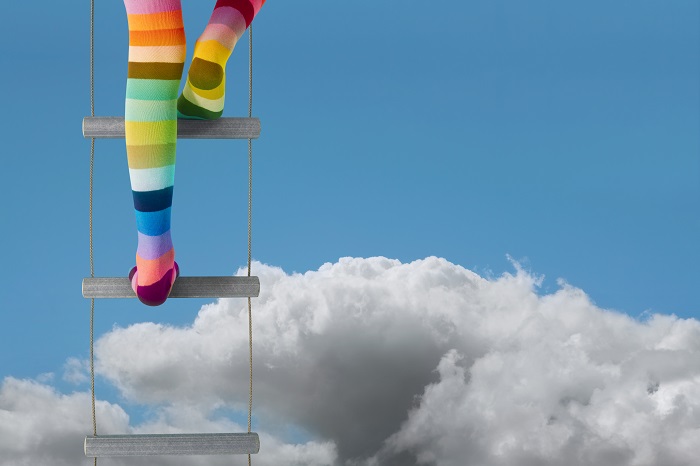As a therapist, I often hear from clients that they’ve read mindfulness books or downloaded apps. I ask if they find them helpful. Usually, there’s a micro-gap between my question and the answer. I interpret this gap to mean, “well, not really,” though I most often hear “yes.”
I have an idea why this is.
THE DIFFERENCE BETWEEN KNOWLEDGE AND UNDERSTANDING OF MINDFULNESS
In our culture, we are bombarded with information. We have our devices on high alert at all times to cull this information and bring it into our private worlds, where we chew on it constantly and relentlessly. The problem is that as with eating, to chew is not to digest.
With regard to mindfulness, we can learn a tremendous amount. Books abound. Apps abound. And Google can lead us down fractal rabbit holes, filling us with information and more information. We learn about its roots in Buddhism or Hinduism, for example. We learn that it predates both religious traditions, and we learn that it is not necessarily a religious practice, nor has it always been.
We learn techniques. Some are based in visualizations. Some are based in mantra. Some rely on breathing. We read about the benefits of mindfulness. We have mindful eating. Mindful housework. Today, we have mindful everything.
When you couple this plethora of information with the urgent calls our culture invokes as fear of missing out (FOMO), we have the perfect storm for knowing everything about mindfulness (or any other popularized topic related to self-care) and understanding nothing.
Being mindful as a practice means to bring that self into the present through means that reside within your mind.
This is simply because to know is not the same as to understand. Our culture creates dataheads.
Think of yourself in high school algebra class. If you were like most students, even the brightest, you learned to apply formulae and rules in order to show your work and derive products of your thinking. You might have excelled, just as you might have excelled at the grammatical discipline of diagramming sentences.
Working with algebraic equations and parsing speech, though, can be differentiated from understanding the vast and purposeful intricacies of mathematics and language. To approach these avenues of human ingenuity with anything less than a framework of awe is to see the black marks on a page without sensing that they coalesce into meaning beyond their visible structure.
And so it is with mindfulness.
TO EMBRACE MINDFULNESS, MOVE INTO AWE
The first order of business in grasping mindfulness is to stand back in awe. What are the considerations? They are at once intuitive and counterintuitive. To move into awe is to stand in ambiguity and embrace it, acknowledging there are things we simply cannot understand intellectually. However, at the same time, we can grasp them intensely though our senses. This is you on a breathtakingly starry night. This is you at the edge of the ocean’s roar. This is you with your newborn. You are not called to understand. You are moved to embrace.
Being mindful as a practice means to bring that self into the present through means that reside within your mind. It is to go inside in order to experience infinity. It is to be outside of time. And this is visceral. All the data, all the information, will not create the pathway to mindfulness if you do not start with a vantage point of awe.
What a wonder it is to be the thinker of the thoughts! To be the feeler of the feelings, the toucher who touches. That is the space of mindfulness. It is to dwell in the awe you can bring to every moment, if you so choose. This awe is latent within you. You can call it forth.
Within this framework, you can then sort through the information you’ve gathered about mindfulness practices. You will find an idiom that aligns best with your needs. The only important thing is what comforts you. All the “Top Ten Mindfulness Apps” and “Best Books about Mindfulness” lists will not give you that information.
You must sense it for yourself. First, though, you must give yourself permission to explore and choose, and to cast off even the Top-Rated Technique in favor of what gives you momentary respite from the weight of daily life and the opportunity to catch your breath. It is personal. You are honoring yourself as the chooser of the choices. And that is the soul you are attempting to soothe.
WHEN YOU REACH THE ROOF, CREATE YOUR PRACTICE
As Ludwig Wittgenstein counseled when expressing his thoughts about studying philosophy, once you climb the ladder to reach the roof, you no longer need the ladder. So it is with mindfulness. Once you read the books and download the apps, you are on the roof. Your senses can now come alive to themselves.
Now you can create your own practice. If you remain in the creating phase, the reckoning phase, the quantifying phase (“Am I doing this right? Is this how other people do it? Do I feel better? Should I do it more?”), you will be on that ladder forever. Your benefits will seem meager and you risk giving up on This Mindfulness Thing.
Take a chance. Stand on the roof. Let yourself feel your mindfulness practice. Feel it! Awe will accompany you into the rest of your day. Remember that rest can mean remainder and it can also mean relaxation. Relaxation is a felt sense. No understanding is required.
Kick that ladder away.
© Copyright 2019 GoodTherapy.org.
The preceding article was solely written by the author named above. Any views and opinions expressed are not necessarily shared by GoodTherapy.org.
Copyright © 2007 – 2019 GoodTherapy, LLC.
